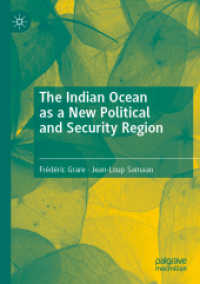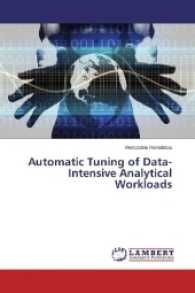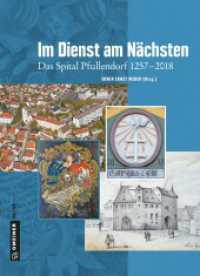- ホーム
- > 洋書
- > ドイツ書
- > Mathematics, Sciences & Technology
- > Technology
- > electronics, electrical engineering, telecommunications
基本説明
Provides methodology and physical background for the design of radio links.
Full Description
The first radio links, wireless telegraphy, were established at the beginnings of the twentieth century by Marconi, who drew upon the theory developed by Maxwell and upon the experimental researches conducted by Hertz. In France, such renown scientists, mathematicians, physicists and experimenters as Poincare, Blondel and the General Ferrie played a crucial role in the development of radiocommunications, more particularly through theoretical and experimental researches which contributed to a better understanding of the different propagation media. Following the Second World War, the researchers and engineers of the newly created Centre National d'Etudes des Telecommunications (CNET), among whom may be mentioned Jean Voge, Francois du Castel, Andre Spizzichino or Lucien Boithias, made decisive contributions to the understanding of the propagation of radio waves, in particular in the context of their application to telecommunications. Although the CNET has now become France Telecom Recherche & Developpement, the present book is in keeping with this approach, which has been going on for more than half a century.
By providing the reader with some of the most recent researches in this field, Herve Sizun offers here an essential complement to the work by Lucien Boithias Radiowave Propagation, first published in 1983 in the Collection Technique et Scientifique des Telecommunications, and published in an English version in 1987 by McGraw- Hill.
Contents
Introduction to the Propagation of Radio Waves.- The Earth's Atmosphere.- Electromagnetic Waves and Propagation Characteristics.- Ionospheric Links.- Terrestrial Fixed Links.- Satellite Links.- Mobile Radio Links.- The Sun and the Solar Activity.- Microphysical Properties of Hydrometeors.- The Frequency Spectrum.- Cross-Polarisation induced by the Atmosphere.- Fresnel Equations.- Ionospheric and Geomagnetic Disturbances associated with Solar Events.- Investigation Methods of the Ionosphere.- The Terrestrial Magnetic Field and the Magnetic Indexes.- Rain Attenuation.- Vegetation Attenuation.- Diffraction Models.- Mobile Radio Measurements.- Directions of Arrival.- Geographical Databases.- Determination of the Electromagnetic Field after Interaction with Structures.








